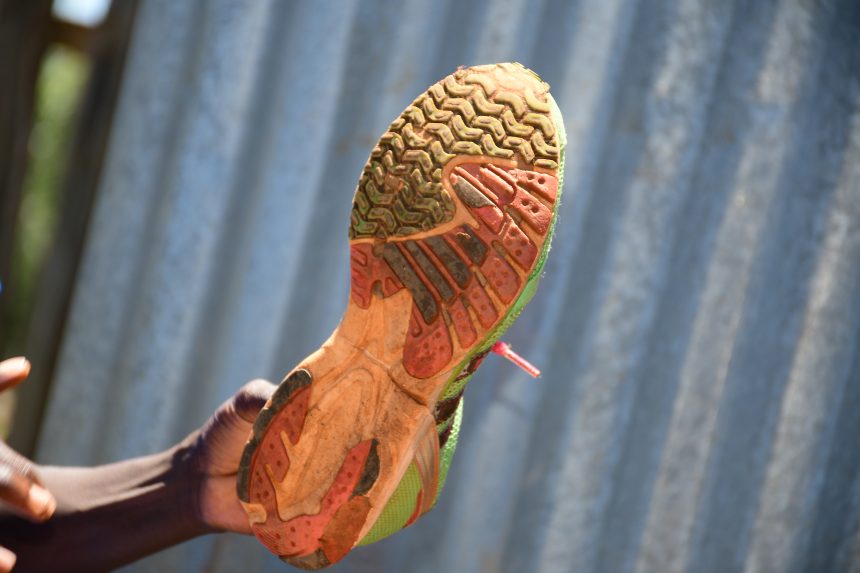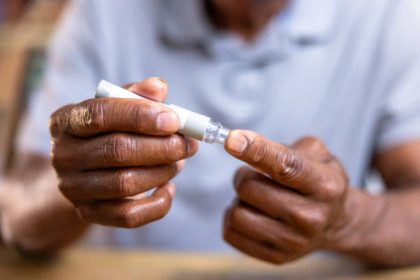Pregnancy was once the career finish line of Kenyan athletes—until Catherine Ndereba had a baby, tied her laces, and casually won four Boston Marathons.
African female athletes are graceful, strong and resilient. They consistently push their mental and physical boundaries to achieve the unimaginable.
Their prowess redefines human potential, but behind their remarkable achievements lies a complex interplay between rigorous training and reproductive health.
Historically, pregnancy among Kenyan athletes was viewed as a threat to their careers. However, in 1997, the iconic Catherine Ndereba, now a retired marathoner, conceived and successfully returned to her career, proving that motherhood and exceptional athleticism can coexist.
After her pregnancy in 1997, ‘Catherine the Great’ staged an impressive comeback: winning the Boston Marathon four times in 2000, 2001, 20004, and 2005- the first for an African woman athlete.
Kenya’s Vivian Cheruiyot and Faith Kipyegon (who held three world records after maternity leave), Shelly-Ann Fraser-Pryce of Jamaica and Nia Ali of USA are the other elite athletes whose athletic performance improved after childbirth.
Similarly, a 2022 study on the effect of pregnancy on 42 elite to world-class runners’ training and performance outcomes, conducted by Dr Francine Darroch of Carlton University, Canada, revealed that 56 per cent of athletes improved their performances one to three years post-pregnancy.
Sports physiologists peg the outcomes to physiological changes during pregnancy, as well as increased blood volume and oxygen-carrying capacity, hormonal adjustments improve endurance and recovery. Additionally, psychological endurance and motivation gained during motherhood contribute to enhanced performance.

Naturally, pregnant women gain weight. For endurance running, an optimal physique typically features lower body fat and higher muscle mass. Intensive training after childbirth can increase the risk of developing the Female Athlete Triad (FAT), which consists of three interconnected health concerns: low energy availability, menstrual dysfunction, and decreased bone density.
Postpartum athletes may be particularly vulnerable due to factors like inadequate nutrition to match training demands, hormonal shifts, and limited recovery periods.
Research on the profile of FAT among elite Kenyan endurance athletes and non-athletes, by Dr Yvonne Goodwin, a sports science researcher, also revealed that women participating in endurance sports were at risk of presenting with FAT. Menstrual dysfunction and low energy availability were reported to be more prevalent in athletes. Decreased bone density was slightly more common in non-athletes. About 10 per cent of athlete participants exhibited all the components of the triad.
The study emphasised the need for improved education on nutrition and individualised
strategies for balancing energy, training, and recovery, to ensure athletes maintain both performance and long-term health. It therefore follows that regular monitoring of hormone levels and working with medical professionals can help detect and address potential problems early, ensuring athletes maintain good overall health.
High-intensity exercise poses a risk for hormonal imbalance in female athletes, resulting in menstrual irregularities such as anovulation and luteal-phase deficiency. This concurs with the findings of the study titled “Effect of Exercise on Reproductive Hormones in Female Athletes” by Maryam Mosavat, a sports science researcher at Universiti Sains Malaysia.
Anovulation refers to the absence of ovulation, indicating that cycles occur without the release of an egg from the ovaries.
In luteal-phase deficiency, the time between ovulation and the onset of menstrual bleeding is shortened or exhibits limited hormonal activity.
Strenuous physical activity elevates cortisol levels, the primary stress hormone, which indirectly affects the production of follicle-stimulating hormone (FSH) and luteinizing hormone (LH) by the pituitary gland in the brain. Both FSH and LH are essential for ovulation and maintaining a regular menstrual cycle.
Ultimately, elevated cortisol levels disrupt the balance between the female sex hormones estrogen and progesterone through several complicated mechanisms, potentially impacting fertility.
Limited research has been conducted in Kenya and Africa as a whole, focusing on reproductive health and contraceptive use among female athletes.
According to a 2024 online survey of female endurance athletes in Canada and the USA conducted by Stephanie Ryall, a Canadian sports science researcher, hormonal contraceptives (particularly hormonal intrauterine devices) were identified as the preferred method of contraception for this population. They were reported to be well tolerated with minimal effects on performance.
Hormonal IUDs are a long-acting, reversible contraceptive method. They work by releasing small amounts of synthetic progesterone (levonorgestrel) into a woman’s body, preventing pregnancy by inhibiting sperm transport and causing changes in the endometrial lining that hinder the implantation of a fertilized egg.
Research titled “Characteristics of Menstrual Cycle and Hormonal Contraceptive Use in Collegiate Female Athletes,” by New Zealand’s Dr Stacy T. Sims, an exercise physiologist and nutrition scientist, found that hormonal IUDs may help reduce premenstrual syndrome-related declines in athletic performance during the week before menstruation (late luteal phase).
Combined oral contraceptive (COC) pills contain synthetic estrogen and progesterone, which prevent pregnancy by inhibiting ovulation through the suppression of FSH and LH hormones in the brain, ensuring that no egg is released. Additionally, they thicken cervical mucus, which blocks sperm penetration.
According to Katie Clayton, a PhD holder from Stanford University and a coach affiliated with USA’s Endurance Drive, a coaching organization that supports athletes worldwide, high concentrations of synthetic estrogen in COC pills influence how the body manages intense physical activity and recovers from stress.
COCs have been linked to poor athletic performance in some female athletes, including reduced capacity to adapt to intense training, decreased ability to utilize oxygen efficiently for energy production, and increased cell damage from oxidative stress.
COCs create an artificial menstrual period by using synthetic hormones to cause withdrawal bleeding during the placebo pill week. In female athletes with absent periods due to intense training or poor nutrition, COCs can hide issues like hormonal imbalances or energy deficits, which, if untreated, may lead to problems like weaker bones (osteoporosis) and slower recovery.
Here are what Kenyan elite athletes should be aware of while using contraceptives.
Cultural beliefs may influence athletes’ attitudes toward contraceptives and their comfort in seeking medical guidance. Access to contraceptive options and healthcare varies, with urban centres like Nairobi offering more resources than rural areas, where services may be limited. To champion these challenges, Kenyan female athletes should strike a balance between cultural beliefs and their health needs. Those in remote locations should take advantage of telemedicine to consult medical doctors on contraceptives and other health issues.
High-altitude training can worsen the cardiovascular effects of hormonal contraceptives, especially those containing synthetic estrogen, due to low oxygen levels and increased strain on the heart. At high altitudes, the body produces more red blood cells to compensate for decreased oxygen availability, which can thicken the blood and increase the risk of blood clots.
Furthermore, one of the adverse effects of estrogen-containing contraceptives is an increased risk of blood clotting, contributing to blood thickening and potentially predisposing individuals to deep vein thrombosis, pulmonary embolism, and other complications. Those at high risk include individuals with pre-existing lung or heart conditions. Proper acclimatization and medical guidance are essential for avoiding and managing these risks.
Kenyan athletes often excel in endurance events. They should consider how contraceptives could impact key performance metrics like VO2 max, lactate threshold, and recovery. Estrogen-containing contraceptives may impact oxygen utilization, affecting VO2 max and consequently, total endurance capacity. Additionally, hormonal changes could impact lactate metabolism, making it more difficult for the body to efficiently eliminate lactic acid produced during intense exercise.
Intense international competition schedules demand reliable contraception that poses few health risks. Long periods of sitting on flights (immobility), along with estrogen contraceptives, heighten the likelihood of blood clots. To reduce these dangers, athletes should explore contraception options that carry a lower risk of clotting, such as progestin-only contraceptives, and adopt preventive strategies like wearing compression stockings, maintaining hydration, and engaging in light leg exercises while flying.

Weight management is crucial for elite runners, as their body composition impacts performance and endurance. Certain contraceptives, particularly those containing estrogen, may influence weight in some individuals due to fluid retention and changes in fat distribution. Choosing contraceptives with minimal risk of weight gain, along with the guidance of sports medical professionals and nutritionists, helps ensure athletes maintain peak condition.
Finally, Kenya, her development partners, universities, drug manufacturers, and sports organizations, especially World Athletics, should invest in research on African female athletes, their reproductive health, and contraceptive use. Their findings should be simplified so that they are easily understood by athletes and their coaches when disseminated in seminars and other forums. The advisory arm of Athletic Kenya should keep abreast with the latest research in sports medicine and share the knowledge with female athletes while ensuring that it has enough trainers for the task.
Dr Sharon Wambua is a Pharmacist and creative non-fiction writer.
























